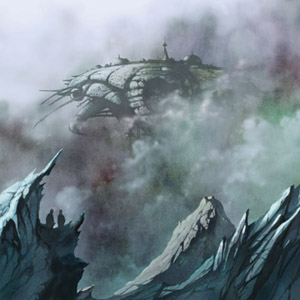 The worlds of free jazz and harsh noise have always shared a lot of commonalities: both eschew the limitations of structure and melody for the sake of pure tone and texture, and both can either come across as structured, compelling chaos, or inane, boring noodling. Burning Tree have managed to straddle that line between jazz and noise as well as few other artists have, and with unrelenting brutality, on this first full length release that stands with the titans of both genres.
The worlds of free jazz and harsh noise have always shared a lot of commonalities: both eschew the limitations of structure and melody for the sake of pure tone and texture, and both can either come across as structured, compelling chaos, or inane, boring noodling. Burning Tree have managed to straddle that line between jazz and noise as well as few other artists have, and with unrelenting brutality, on this first full length release that stands with the titans of both genres.
The two genres have always had a lot of overlap:the squall of Ornette Coleman’s Free Jazz and John Coltrane’s "Ascension" have often been cited by the likes of Merzbow and Hijokaidan as influences, both of whom have demonstrated jazz tendencies on their own recordings.But Burning Tree is pulled between those two poles unlike few others, save for Borbetomagus and the Nihilist Spasm Band.
Coming from the same European school of jazz that birthed the likes of Peter Brötzmann, this duo of Dag Erik Knedal Anderson on drums and Dag Stiberg on saxophone play with a fury and physicality that rivals that of his best work on Machine Gun or Nipples.Anderson’s drumming has the blast beat intensity of Napalm Death or even Agoraphobic Nosebleed, but with the variation and nuance of an accomplished percussionist.
At the same time, Stiberg's horn playing at times sounds nothing at all like the woodwind that it is, and instead starts to blur together like a wall of microphone feedback, such as on the breakneck paced "The Point."The shrillness is occasionally supplanted by a squeaking, exasperated sound, but the whole time it is propelled by a rhythm that sounds more like a thunderous roar than a collection of individual beats.
On "Divided," Stiberg's horn take on a nauseating, guttural quality like a slowly dying wildebeest, with Anderson's jackhammer like pounding coming together like some of John Zorn's best, heaviest work.The entire B side of the record is reserved for "No Return," a side-long piece that does not differ that much from the A side, except it is channeled into a single, non-stop composition.The squealing horns and machine gun drums continue, with the duo putting together noises that do not sound the slightest bit human.Most impressive is the breakneck pace that it follows, outpacing most grindcore records by a large margin with nary a pause or stop until the ending.
If there is a shortcoming of Lammergyer, it is its monochromatic nature.The entire album is simply a sax and drum duo, and thus while technically impressive, it can be a bit fatiguing at times.Which is no different than a good noise album, however:I love the Incapacitants, but I can only listen to them so much in one sitting before I have to switch to something else.However, the sheer force and brutality of this record, as well as its precarious balance between jazz and noise far outweigh this limitation, and actually just add to the physical intensity of listening to it.
samples:
 
Read More

